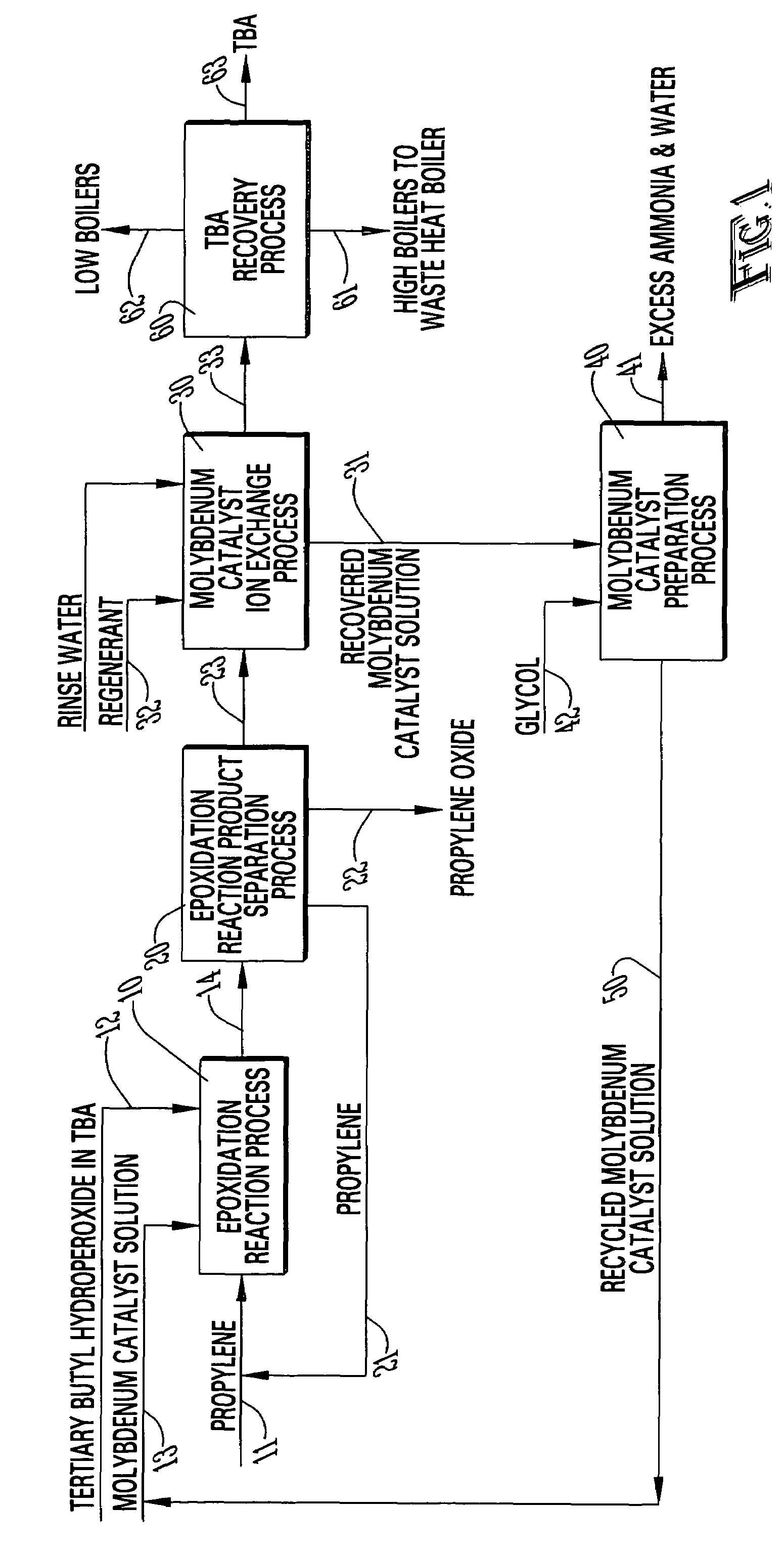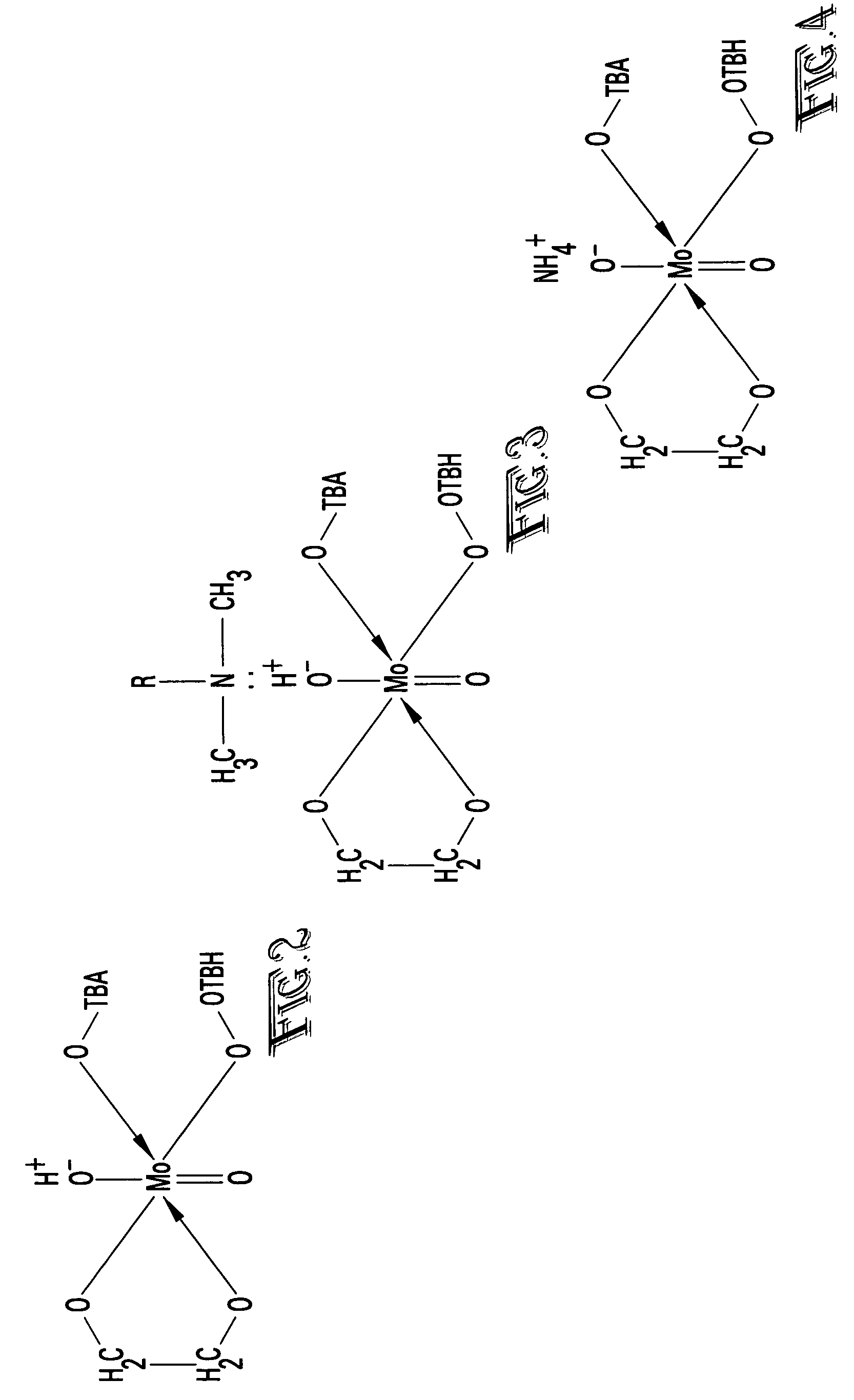Process for manufacturing propylene oxide
a manufacturing process and propylene oxide technology, applied in the field of molybdenum catalyst recovery, can solve problems such as operation problems, achieve the effects of preventing leakage of molybdate catalysts, reducing production costs, and reducing production costs
- Summary
- Abstract
- Description
- Claims
- Application Information
AI Technical Summary
Benefits of technology
Problems solved by technology
Method used
Image
Examples
Embodiment Construction
[0021]With reference to FIGS. 1-5, the preferred embodiment of the present invention may be described as follows.
[0022]With reference to FIG. 1, the epoxidation reaction process 10 reacts a propylene stream 11 with a tertiary butyl hydroperoxide (TBH) in tertiary butyl alcohol (TBA) stream 12 in the presence of a molybdenum catalyst 13 to produce a reaction product stream 14 containing unreacted propylene, propylene oxide, TBA, unreacted TBH, molybdenum catalyst and impurities. The reaction mixture 14 is separated in an epoxidation reaction product separation process 20 to produce a recycled propylene stream 21, a propylene oxide stream 22 and and TBA process stream 23 containing TBA, the dissolved molybdenum catalyst in the active form and various impurities. The “active form” of the molybdenum is shown in FIG. 2. The molybdenum catalyst is converted into the “active form” during the epoxidation reaction.
[0023]In accordance with the present invention, the active form of the molybde...
PUM
| Property | Measurement | Unit |
|---|---|---|
| boiling | aaaaa | aaaaa |
| heat transfer surface fouling | aaaaa | aaaaa |
| time | aaaaa | aaaaa |
Abstract
Description
Claims
Application Information
 Login to View More
Login to View More - R&D
- Intellectual Property
- Life Sciences
- Materials
- Tech Scout
- Unparalleled Data Quality
- Higher Quality Content
- 60% Fewer Hallucinations
Browse by: Latest US Patents, China's latest patents, Technical Efficacy Thesaurus, Application Domain, Technology Topic, Popular Technical Reports.
© 2025 PatSnap. All rights reserved.Legal|Privacy policy|Modern Slavery Act Transparency Statement|Sitemap|About US| Contact US: help@patsnap.com



